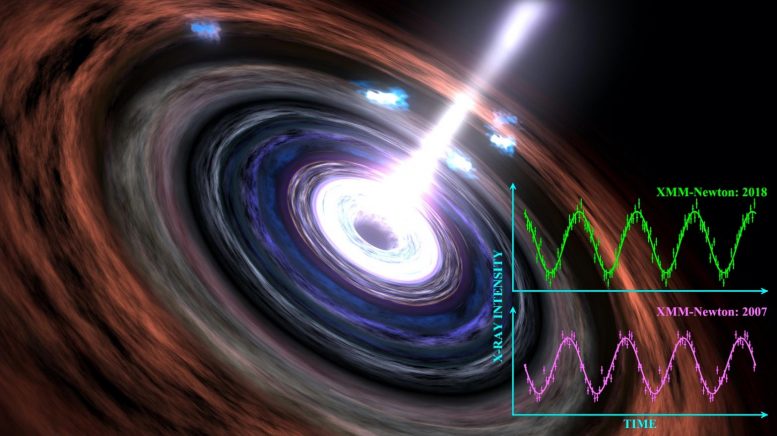
A black hole including the heartbeat signal observed in 2007 and 2018. Credit: Dr Chichuan Jin, of the National Astronomical Observatories, Chinese Academy of Sciences and NASA/Goddard Space Flight Center Conceptual Image Lab
The first confirmed heartbeat of a supermassive black hole is still going strong more than ten years after first being observed.
X-ray satellite observations spotted the repeated beat after its signal had been blocked by our Sun for a number of years.
Astronomers say this is the most long-lived heartbeat ever seen in a black hole and tells us more about the size and structure close to its event horizon — the space around a black hole from which nothing, including light, can escape.
The research, by the National Astronomical Observatories, Chinese Academy of Sciences, China, and Durham University, UK, appears in the journal Monthly Notices of the Royal Astronomical Society.
Model for the Quasi-Periodic Oscillations (QPO) — or ‘heartbeat’ — where the inner part of the accretion disc is oscillating in size and shape, shown as a cross-section in the plane of the disc. Credit: Dr. Chichuan Jin of the National Astronomical Observatories, Chinese Academy of Sciences
The black hole’s heartbeat was first detected in 2007 at the center of a galaxy called RE J1034+396 which is approximately 600 million light-years from Earth.
The signal from this galactic giant repeated every hour and this behavior was seen in several snapshots taken before satellite observations were blocked by our Sun in 2011.
In 2018 the European Space Agency’s XMM-Newton X-ray satellite was able to finally re-observe the black hole and to scientists’ amazement, the same repeated heartbeat could still be seen.
Matter falling on to a supermassive black hole as it feeds from the accretion disc of material surrounding it releases an enormous amount of power from a comparatively tiny region of space, but this is rarely seen as a specific repeatable pattern like a heartbeat.
The time between beats can tell us about the size and structure of the matter close to the black hole’s event horizon.
The oscillating region is close to the black hole, so light travel paths that should be bent by the strong gravity, changing its appearance depending on inclination. These animations show how this region would look including this light bending when viewed edge on, and face on. Credit: Dr. Frederic Vincent, Observatoire de Paris, France
Professor Chris Done, in Durham University’s Centre for Extragalactic Astronomy collaborated on the findings with colleague Professor Martin Ward, Temple Chevallier Chair of Astronomy.
Professor Done said: “The main idea for how this heartbeat is formed is that the inner parts of the accretion disc are expanding and contracting.
“The only other system we know which seems to do the same thing is a 100,000 times smaller stellar-mass black hole in our Milky Way, fed by a binary companion star, with correspondingly smaller luminosities and timescales.
“This shows us that simple scalings with black hole mass work even for the rarest types of behavior.”
Lead author Dr. Chichuan Jin of the National Astronomical Observatories, Chinese Academy of Sciences, said: “This heartbeat is amazing!
“It proves that such signals arising from a supermassive black hole can be very strong and persistent. It also provides the best opportunity for scientists to further investigate the nature and origin of this heartbeat signal.”
The next step in the research is to perform a comprehensive analysis of this intriguing signal, and compare it with the behavior of stellar-mass black holes in our Milky Way.
Reference: “Reobserving the NLS1 galaxy RE J1034+396 – I. The long-term, recurrent X-ray QPO with a high significance” by Chichuan Jin, Chris Done and Martin Ward, 10 June 2020, Monthly Notices of the Royal Astronomical Society.
DOI: 10.1093/mnras/staa1356
The research was funded by the National Natural Science Foundation of China, the Strategic Pioneer Program on Space Science, Chinese Academy of Sciences, and the Science and Technology Facilities Council, UK.

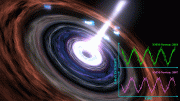



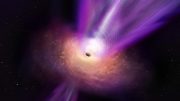
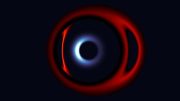

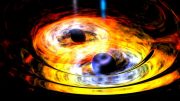
To whom it may concern,
This picture of the innermost part of accretion near the compact object is a copy of the image of Compton cloud in the publications by Titarchuk et al. since 1995! Below One can find the list of these publications in the Astrophysical Journal and Astronomy & Astrophysics.
Best wishes
Lev Titarchuk
————————————————————————————————————————–
1. THE ASTROPHYSICAL JOURNAL, 499:315-328, 1998 May 20
Lev Titarchuk, Iosif Lapidus & Alex Muslimov
“MECHANISMS FOR HIGH-FREQUENCY QUASI-PERIODIC OSCILLATIONS IN NEUTRON STAR AND BLACK HOLE BINARIES”
Fig.1
2. The Astrophysical Journal, 612:988–999, 2004 September 10
Lev Titarchuk and Ralph Fiorito
“SPECTRAL INDEX AND QUASI-PERIODIC OSCILLATION FREQUENCY CORRELATION IN BLACK HOLE SOURCES: OBSERVATIONAL EVIDENCE OF TWO PHASES AND PHASE TRANSITION IN BLACK HOLES “
Fig. 1
3. THE ASTROPHYSICAL JOURNAL, 455:623-639, 1995 December 20
Sandip Chakrabarti and Lev Titarchuk
“Spectral properties of accretion disk around Galactic and Exnragalactic black holes”
Fig. 1
4. PASJ: Publ. Astron. Soc. Japan 48, 59-65 (1996)
Ken Ebisawa, Lev Titarchuk and Sandip Chakrabarti
“On the Spectral Slopes of Hard X-Ray Emission from Black Hole Candidates”
Fig.1
5. The Astrophysical Journal, 706:1463–1483, 2009 December 1
Lev Titarchuk and Elena Seifina
“DISCOVERY OF PHOTON INDEX SATURATION IN THE BLACK HOLE BINARY GRS 1915+105 “
Fig.1
6. The Astrophysical Journal, 598:168–177, 2003 November 20
Chris R. Shrader and Lev Titarchuk
“A METHOD FOR BLACK HOLE MASS DETERMINATION IN ACCRETION-POWERED X-RAY SOURCES “
Fig.1
7. The Astrophysical Journal, 738:128 (20pp), 2011 September 10
Elena Seifina and Lev Titarchuk
“ON THE CONSTANCY OF THE PHOTON INDEX OF X-RAY SPECTRA OF 4U 1728-34 THROUGH ALL SPECTRAL STATES “
Fig. 2
8. The Astrophysical Journal, 747:99 (15pp), 2012 March 10
Elena Seifina and Lev Titarchuk
“GX 3+1: THE STABILITY OF SPECTRAL INDEX AS A FUNCTION OF MASS ACCRETION RATE “
Fig.2
9. The Astrophysical Journal, 722:586–604, 2010 October 10
Elena Seifina and Lev Titarchuk
“ON THE NATURE OF THE COMPACT OBJECT IN SS 433: OBSERVATIONAL EVIDENCE OF X-RAY PHOTON INDEX SATURATION “
Fig. 1
10. The Astrophysical Journal, 789:98 (20pp), 2014 July 10
Lev Titarchuk, Elena Seifina, and Chris Shrader
“X-RAY SPECTRAL AND TIMING BEHAVIOR OF SCORPIUS X-1. SPECTRAL HARDENING DURING THE FLARING BRANCH”
Fig. 4